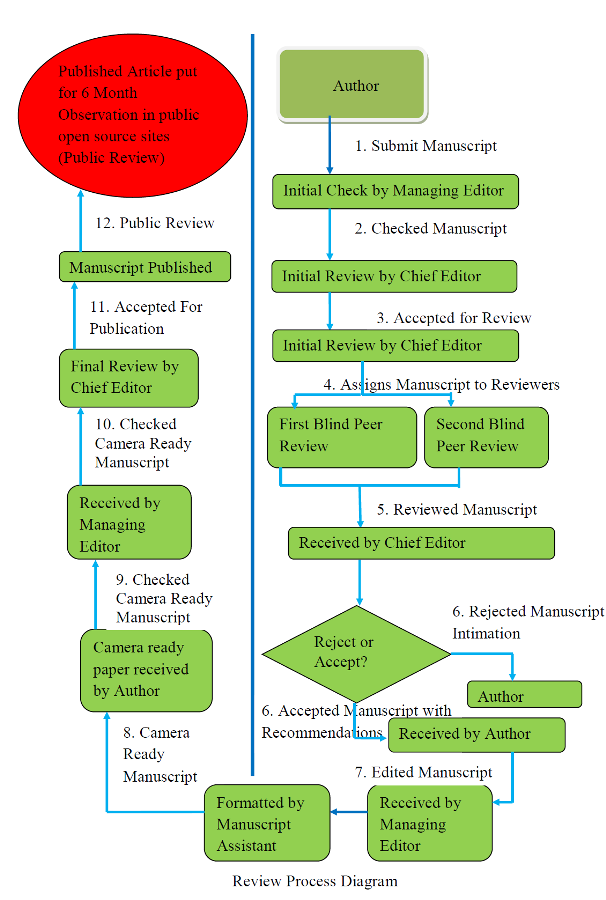Peer Review
Peer review is the process of subjecting an author’s scholarly work, research, or ideas to the scrutiny of others who are experts in the same field. Peer review requires a community of experts in a given and often narrowly defined field, who are qualified and able to perform impartial review. Impartial review of work is difficult to accomplish and the significance (good or bad) of an idea may never be widely appreciated among its contemporaries. This process encourages authors to meet the accepted standards of their discipline and prevents the dissemination of irrelevant findings, unwarranted claims, unacceptable interpretations, and personal views.
Publications that have not undergone peer review are likely to be regarded with suspicion by scholars and professionals.
Referees evaluations usually include an explicit recommendation of what to do with the manuscript or proposal, often chosen from options provided by the journal. Most recommendations are along the lines of the following:
- To unconditionally accept the manuscript or proposal,
- To accept it in the event that its authors improve it in certain ways,
- To reject it, but encourage revision and invite resubmission,
- To reject it outright.
IJHSP follows a strict blind peer-review programme, wherein the reviewers are not aware of the identities of the authors of the papers which are being reviewed by them. The IJHSP reviewers are selected after thorough screening process.
IJHSP has a process of inviting applications from prospective reviewers.

Peer Review Process
The peer review process consists of following steps.
- Author submits manuscript to the journal through online portal.
- Author submitted manuscript is checked by Managing Editor for Relevance of the Subject, and Plagiarism policy and for journal standards.
- The initial reviewed manuscript by the Managing Editor is again checked by Chief Editor for Relevance of the Subject, and Originality of the content.
- After Initial Review by the Chief Editor, manuscript is accepted for Review Process.
- The Chief Editor assigns accepted manuscript blindly to two reviewers.
- In the blind review process neither authors nor reviewers know each other’s identities and reviewer’s reviews manuscript for Originality of the content, Social Relevance of the subject, and Subject knowledge of the Author.
- Blind reviewed manuscript is received by the Chief Editor.
- Based on the blind Reviewer’s suggestions and Chief Editor Reviews the manuscript rejected or accepted with modifications or without modifications. In case manuscript is rejected, and intimation sent to the author and review process ends. If manuscript is accepted with modifications then manuscript is sent to author.
- Manuscript is sent to Author for further modification based on the recommendations made by the Chief Editor.
- Edited manuscript is sent to publishing house by the Author.
- Edited manuscript by the author is received by the Managing Editor.
- Manuscript is formatted by the Manuscript Assistant.
- Managing Editor sends final formatted manuscript to Author as Camera Ready paper.
- The camera ready paper is verified by author and sent back to publishing house.
- The verified camera ready paper is accepted by the Managing editor, verified and sent to chief editor.
- Chief Editor verifies the manuscript as a final step.
- Manuscript is published.
- After publication paper is put for public review for a period of six months in public open source sites.
- After the six months the public review or comments are sent to the Author.